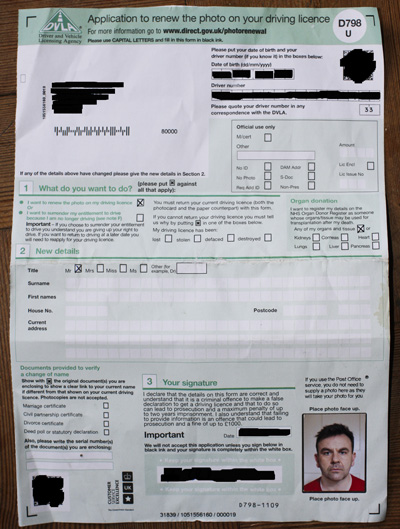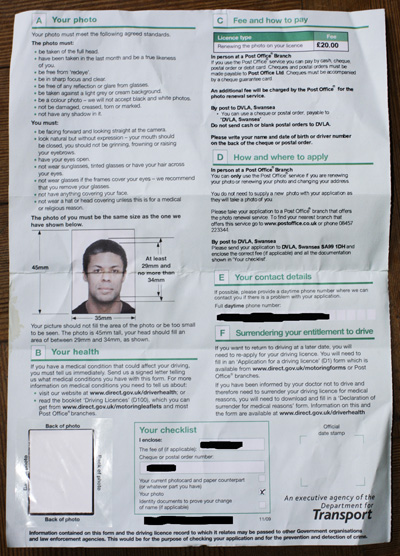Mar 24, 2011 6
Community post hubs
This is not my idea. This is something I heard talked about years ago. Literally, years ago. Can’t remember who, when or where. It’s niggled at me ever since. But there’s no point hanging on to it in the back of my head. Perhaps someone can make it work?
Online commerce has transformed the experience of shopping. But one of the weakest links in the chain is that final stage of sending your purchases to you.
Processes to try and get a parcel through a locked door that has no parcel-shaped hole in it haven’t moved on that much. We’re still reliant on postal rounds, tracking services, cards through doors, agonising decisions to try again or collect from a depot (three strikes and it’s gone forever!), and so on.
There is now a bit of colour in this formerly grey picture, in the form of increased choices of courier company, some of whom now offer more precise delivery times, and even innovations like “get the courier to call me on my mobile using her mobile to come up with a good hiding place or agree which neighbour to call on”. Amazing. You’d almost think we were in, oh, hang on…
But these are all basically variations on an existing model which tries to get stuff through our door when we’re not there. They all waste our time, create huge scope for risk and loss, and cost retailers and logistics companies dearly as they pay to shuttle parcels through many pairs of hands, across many more locations than they need to.
There’s another approach. Bring the parcels to a place in a community where they can be looked after and picked up. And that place is not a Post Office.
Now I’ll be one of the first to come out in support of local Post Offices: they provide a valuable community function far above and beyond their “commercial” aspect. But to expect one to be open when I get off the train at 9pm is, even in my wildest imagination, unrealistic. But the petrol station is open. The off-licence is open. The pub is open.
So all it takes is for a community to have a handful of local postal delivery hubs. If I choose that option for my delivery (and I think choice would be a good way to ease it in, and genuinely illustrate the demand that I think is there) then I simply get an SMS, email, phone call (or even card through the door) to tell me that it’s been dropped off. Let’s avoid the card through the door, hey—you don’t even have to come to my door! If there’s a choice of hubs in my community, my parcel will be at the one geographically nearest to me, and I’ll be told which one.
I take some ID, and get my parcel. I might even get to speak to some people in my community at the same time. Who knows? That’s it, really.
Ok, let’s have the criticisms:
You’re destroying the postal service, Paul. Taking away huge chunks of business that will wreck their working patterns. Nothing will be the same again. Once you start disrupting parcel services like this, the old and the vulnerable will inevitably lose their “to the door” option.
Well, there may be changes, yes: it will save a lot of time on rounds, and at collection offices. Maybe there will have to be a rethink about resources and ways of working. But it’s commerce that’s changing: if all consumers are having to bend to fit a model that was built for other times, that’s not really sustainable either. Done right, I figure there’s enough revenue and value within the overall system to maintain a universal delivery option. But trying it out won’t break anything: it will only improve services (hopefully) and produce better information (certainly).
People will be so confused. These hubs will come and go. They’ll get a text message or something and not know where to go.
Some fair points. But don’t miss the point that it’s opt-in, and those likely to do so will also be likely to know their community well enough to find a pub or a late-night convenience store. I’m working on the basis that people will choose this when the hub is less than ten minutes gentle walk from their door. Those that can’t, or don’t want to, walk can stick with the existing process.
The hub might be shut.
True: this is a real issue. Staff go sick, power fails, crap happens. There’ll have to be some declaration of availability by the hub. You know, like their normal opening hours… But if you know you’re always out when parcels arrive, and the best chance you’ve got of retrieving your parcel is the 0830-1300 time slot on a Saturday at the sorting office in the nearest town, are you seriously suggesting that this can’t be improved on? No solution is perfect. None. All have flaws and risks. That’s life. But things could be better than they are now with a little creative thinking.
People in shops and pubs have jobs already. They’re busy. They have no time to do this. And they’ll be at greater risk: robbery, fraud, liability for missing goods, trip hazards…
Sure. If those risks are too great for them, they won’t apply to be a hub. But did I mention the money? This isn’t charity. This is community-enabled, not community-funded. Being a hub brings in a very real income. A per-parcel handling charge that might allow for extra staff, security, CCTV, insurance, more insurance… You get the point. Money eases all risks to some extent. So does an increase in the number of hubs. Micro-hubs every couple of streets would mean there was no great treasure trove in one place, to be raided. Yes, the risk profile changes, but it’s still measurable, and manageable.
Where would the money come from?
A combination of purchasers paying a (small) levy for the convenience, and a levy paid by delivery companies, justified by the savings they’d make in other areas: like answering all those angry phone calls, doing all those extra miles in their vans, and so on. It could lead to whole new businesses: people who know they’re always at home, using their home as the hub, really bringing business within the community. Revenue sources tend to bring opportunities like that.
Could the hubs do more than just receive? What about posting? Or other services?
I’d suggest not in the first instance. That might come later, but it raises a whole load of other issues, particularly about handling money. Let’s not fall down that old trap of trying to enhance features before we’ve even tried to see if something basic works, hey? The “not handling money” bit is important. Parcels requiring additional charges on collection wouldn’t go down this route. This would be a straight “show ID and get parcel” service—but that’s the vast majority by volume, anyway, isn’t it?
A pub is not an appropriate place to keep parcels.
*eye roll in an upwards direction*
Oh, one last feature. Well, more of a non-feature, really. This approach is NOT going to fall down the hole of trying to be too clever with technology. Big databases of registered hubs, clever algorithms to find the nearest open at a particular time, lots of hyperlocal information that all has to be kept up to date, integration with online retailers so maps and hub addresses pop up in real-time as you check out in your cart, choice, choice, choice, choice? Forget it. FORGET IT. Have we learnt nothing? Keep this simple. If I ask for a community hub delivery, I’ll get one. It will be local. If it’s not, it won’t be offered. The absolute minimum technology required is a simple relationship between delivery postcode and hub postcodes. That requires a bit of work, sure. It may even be possible to delegate some of that work to the Royal Mail to coordinate (for a cut, of course). But please no great processes for submitting and managing complex data on some godalmighty database in the sky, or trying to offer too much detail to consumers. The interfacing and data maintenance issues will kill things before they’ve got off the ground. Clear?
So, here’s a practical, Big-Society-style-community-empowered idea. It puts customers and communities first. It needs the sort of robust and open approach to risk we all nod and say we’d like to see. It also needs a hefty great supplier, I’d say—an Amazon or similar—to try it out as an option.
Who’s up for it?


